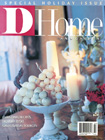In Preston Hollow, nestled among the soaring, turret-studded, faux French chateaux, sits a one-story rambling ranch with a 25-year-old wine cellar that houses one of the most incredible private collections in the city. Premier Grand Cru from Bordeaux; port from every decade of the past century, including a 1908 Dow; and Chateau d’ Yquem from 1925, 1945, and 1967, considered some of the finest white wine in the world. To enter the Poole family cellar, guests wander through a greenhouse with the scent of orchids filling the air into the musty, sweet bouquet of more than 900 bottles.
In Lakewood, tucked into a cul-de-sac, an unremarkable cluster of trees hides a contemporary home with a spacious, glassed-in wine cellar that has 10-foot ceilings, a 600-square-foot tasting room, and a wet bar. The owner built the cellar 15 years ago, and now his stock—more than 1,000 cases—is so comprehensive that he buys only a dozen or so cases a year.
Both of these fabulous wine cellars are indicative of a growing trend in Dallas. Sales of wine-cellar cooling units have increased by more than 30 percent each year since the construction lull in the early ’90s. Sub-Zero and Northland/Marvel are selling so many refrigerated wine coolers and humidors that units are on back order. The demand, says Ron Brown, president of cooling unit manufacturer Breezaire, is another sign of the times. “American taste in wine is maturing,” says Brown. “We have moved from sweeter white Zinfandels to aged red wines, seeking different regional sources.”
In Dallas, where our soil is not basement-friendly, a wine cellar presents challenges. Done properly, a wine cellar could end up being the most expensive room in the house. “A lot depends on soil conditions,” says Dallas builder Jim Reilly, “and location. Is there rock? Lots of water?” To excavate 16 feet and construct a 15-by-18-foot room with one-foot-thick concrete rebar-reinforced walls, accessible by a spiral iron staircase, Reilly advises a $75,000 to $100,000 budget that will likely include a sump pump.
That’s just to build. After construction comes climate control. Moisture content and consistent temperature regulation, between 55 to 65 degrees, are imperative, as is a backup generator. If the moisture content is too high—say, 100 percent relative humidity, rather than the more ideal 75 to 80 percent—algae and mildew can destroy wine labels, as one Dallas collector learned. (Many European wine cellars store bottles without labels; they’ve simply given up.) Above-ground cellars need units that will meticulously maintain humidity as well as temperature.
Richard Van Poole and his father, Richard Poole, former executive vice president of Club Corp Inc., built their Preston Hollow wine cellar in 1975. At the time, says the younger Poole, wine cellars cost about one-and-a-half times the cost of a good swimming pool. The Pooles began collecting wine when the younger Richard graduated from college and spent years in France studying wine. His passion spread to his father, and the duo soon filled the shower stall of one bathroom with wine.
Another wine lover from Lakewood fell into his passion for lack of another: “Being single until I was 40 is what got me into collecting wine,” he says. Before settling down, he read and studied wine voraciously, traveling to France to stock his extraordinary cellar. Building his cellar was a time-consuming operation. A commercial builder installed two large, fully insulated, above-ground Breezaire units to withstand the hottest Dallas temperatures. The second unit acts as a backup if the first one fails. The owner says wine cellars in Dallas must prepare for ground water. In his, there are two French drains and two sump pumps. The cellar and cooling units were also meticulously water-proofed with polyvinyl and sealed to maintain temperature and humidity, the perfect climate for aging and storing. “I don’t know what a 1,200-square-foot wine cellar would do to our home’s resale value,” he says, “but we don’t plan to sell—and we try not to look at the electric bill.”
Richard Poole says a cellar frees you to buy durable wines—bottles that will last for decades, not just those that will peak in five years. A few of his bottles are more than 100 years old. Thus every wine cellar becomes an extension of the owner’s taste.
“Wine talks to you every time you open a bottle,” says Poole. “Most of all it says don’t be in a rush. Take time to appreciate the experience—a novel thought in today’s society.”
But that ultimately is the point of the wine cellar. Perhaps at 55 degrees it may be too chilly for dining—the Pooles keep afghan shawls for thin-blooded guests—but it is a wonderful, secluded environment where friends can catch up with friends and share the tasting of the wine with each other. Time seems to stand still in an afternoon of wine tasting in the cellar—no phone calls, no interruptions.
“This is a place to freeze time,” says the younger Poole, “and to savor a product that changes and evolves as a human does. Unlike anything else, wine has a definition of time attached to it.”





